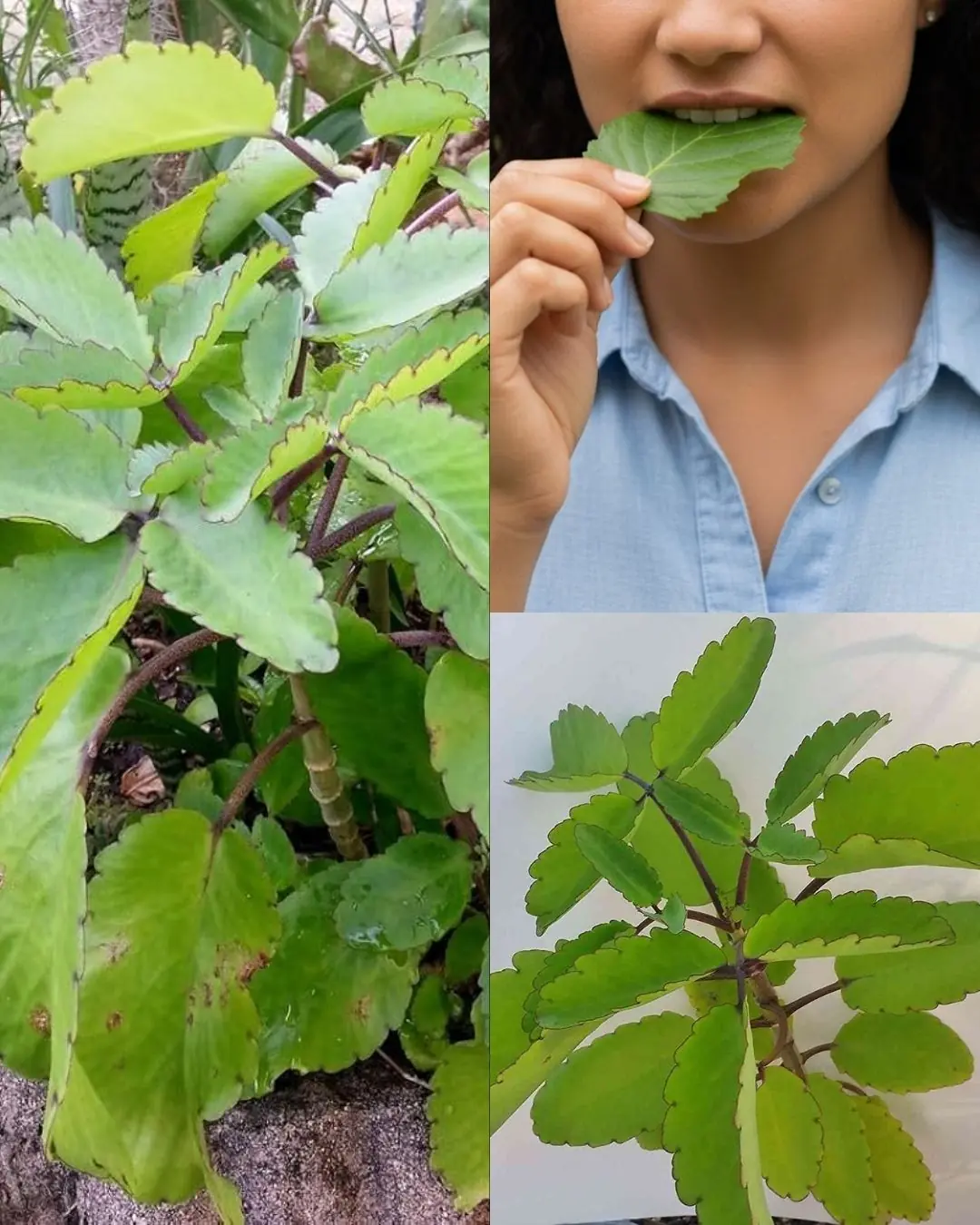
Don’t Throw Away Fish Mint Roots — Here’s Why They’re a Hidden Superfood
While most people are familiar with the leaves of Houttuynia cordata — known in Vietnam as rau diếp cá — few realize that its roots are equally edible and packed with potent health benefits. Traditionally used in Asian medicine, fish mint roots are rich in bioactive compounds and can serve as a valuable ingredient for both healing and culinary purposes.
Nutritional Power and Composition
According to Sức khỏe & Đời sống (Vietnam’s Ministry of Health newspaper), both the leaves and roots of fish mint contain essential oils and nutrients such as vitamin K, lipids, caprinic acid, laurinaldehyde, benzamide, and decanoic acid — all of which contribute to its antibacterial, anti-inflammatory, and detoxifying effects. The root, in particular, is denser in beneficial compounds, offering even stronger health-supporting properties (Healthline, 2023).
Respiratory Health Support
Traditional medicine practitioners have long used fish mint roots to treat respiratory ailments. Modern research from the University of Science and Technology of China identified microRNAs (miRNA) in fish mint root extracts that can inhibit RNA viruses responsible for respiratory infections (Journal of Ethnopharmacology, 2022). This explains why the plant has been used in herbal remedies for colds, sore throats, and bronchitis.
Anti-inflammatory and Antioxidant Benefits
Compounds found in fish mint roots have demonstrated the ability to suppress inflammation by inhibiting cytokines and pathways that trigger immune overreaction. This natural anti-inflammatory action helps relieve conditions such as acne, arthritis, and mild digestive inflammation. Furthermore, the high antioxidant content in fish mint roots protects cells from oxidative stress and supports the immune system — promoting resilience against everyday illnesses (Medical News Today, 2024).
Traditional Eastern Medicine Perspective
In traditional Eastern medicine, the root of Houttuynia cordata is described as slightly spicy and cooling, with detoxifying and blood-activating effects. It enters the lung, spleen, and liver meridians, helping to reduce swelling, eliminate toxins, and promote urination. Herbalists often use it to treat respiratory infections, urinary tract infections, digestive disturbances, and inflammatory skin conditions.
Culinary Uses: Delicious and Medicinal
The roots of fish mint can be used in several dishes, adding both nutrition and flavor:
1. Fish Mint Root Juice:
Wash about 50 grams of roots, blend with water, and strain. To improve the taste, add honey or rock sugar with a few drops of lemon juice. Drink immediately to preserve the highest nutritional value.
2. Fish Mint Root Salad:
Mix 100 grams of roots with shredded carrot, cucumber, and thinly sliced onion. Combine with sesame oil, rice vinegar, sugar, and salt to create a light, refreshing salad. Add chili for a spicy twist.
3. Stir-Fried Fish Mint Roots with Garlic:
Sauté garlic in a little oil until fragrant, then add 200 grams of washed, cut roots. Stir-fry for about 5 minutes with salt and seasoning until tender. This dish is not only flavorful but also supports digestion and detoxification.
Why You Shouldn’t Throw Away the Roots
Although often discarded, fish mint roots are a “hidden gem” of the plant, offering more concentrated benefits than the leaves. Regular consumption — whether as a salad, juice, or stir-fried dish — may help strengthen the immune system, reduce inflammation, and protect respiratory health.
In short, fish mint roots deserve recognition as both a culinary and medicinal treasure. With growing scientific evidence supporting their health-promoting compounds, perhaps it’s time we stop tossing them away — and start embracing this ancient yet underrated “natural medicine” right from our gardens.
News in the same category


Blurred Vision in One Eye and a Headache

George Clinton and Rodney “Darkchild” Jerkins Honored as 2025 Songwriters Hall of Fame Inductees

Angel Reese Surprises Mom for Birthday by Paying off Her Mortgage

THIS 30-YEAR-OLD FOUNDER IS BEHIND THE WORLD’S FIRST ON-DEMAND ELECTRIC VEHICLE CHARGING NETWORK

Pioneering Founder of ‘Afro Sheen,’ George Johnson, to Release Memoir at 97 Years Old

Meet the Founder of the Only Black-Owned Dog Food Company in the U.S.

Meet Kimberlé Williams Crenshaw, the Pioneering Legal Scholar Whose Work Birthed Critical Race Theory

How a Legal Error Cost Justin Baldoni his $400M Lawsuit Against Blake Lively and Ryan Reynolds

Water Pepper — The Plant That Parasites Fear

Here’s the right way to use vinegar in cleaning

Easy DIY Fix for Cracked Bathroom Caulking

8 Reasons Why Adding Baking Soda to Your Toilet Tank Is a Must-Do Trick

Most People Do This Wrong: 10 Everyday Habits That Make Mold Grow Faster

Three Traditional Foods That Help Menopausal Women Stay Youthful and Balanced

How to Drink Honey Water Properly: Surprising Benefits, Best Times, and Who Should Avoid It

Taylor Swift reportedly beefs up security by $2M as she steers clear of spotlight at Travis Kelce’s games

How Zohran Mamdani’s aloof wife, Rama Duwaji, quietly steered his campaign from behind the scenes

Emmerdale fans spark 'recast' concern as Archie Breckle returns to the village
News Post

Tried this the other day and it did wonders!

Mix this into the cleaning water and the floor will be shiny and resistant to stains

2 Signs of Kidney Failure: If Your Morning Urine Shows This Sign, See a Doctor Immediately

Why are you absolutely forbidden to put your feet on the car dashboard, even when stopping?

Most do this wrong. 10 frozen foods you’re storing wrong

Magical Ways to Protect Wooden Furniture from Termites

The ring you pick reveals what kind of woman you are

Reason Why You Should Always Shower At Night

If You’re Not Using Castor Oil You’re Missing Out

Why You Shouldn’t Wash Rice Directly in an Electric Rice Cooker

Leaf of Life – The Healing Plant Growing in Your Backyard

You are doing it all wrong. Here's the right way to load your dishwasher

Add Lemon Juice To Vaseline To Get Younger Looking Skin

8 Methods That Clean Your Gut & Eliminate Constipation Fast! (100% Natural Remedies)

You are doing it all wrong. Here's the right way to fold fitted sheets

How to eat bread, rice, and potatoes without blood sugar spikes

You are doing it all wrong. Here's the right way to wash your towels

Silent heart attack — the pain no one recognizes in time

The HIDDEN cause of neck and shoulder pain nobody talks about
